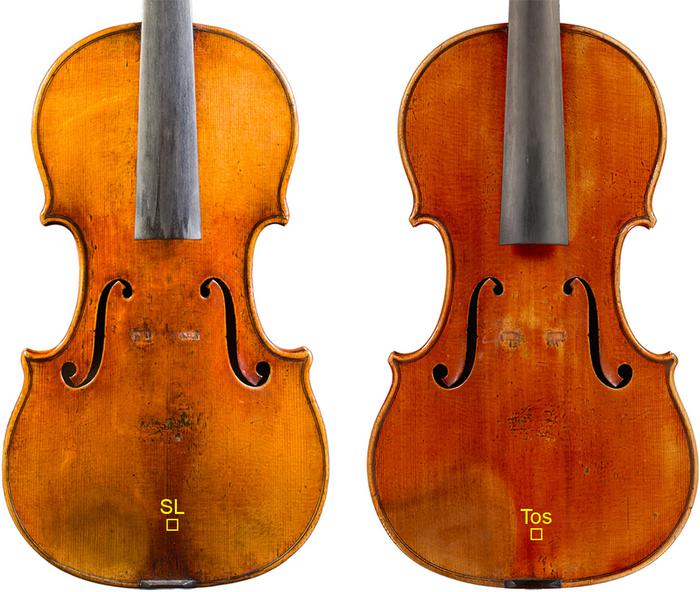Science Another Step Closer To Solving Stradivarius’ Secrets Eva Amsen Contributor Opinions expressed by Forbes Contributors are their own. Writing about the overlap of science and art Following New! Follow this author to stay notified about their latest stories. Got it! Oct 31, 2022, 02:35pm EDT | New! Click on the conversation bubble to join the conversation Got it! Share to Facebook Share to Twitter Share to Linkedin According to violinists, nothing sounds quite like a Stradivarius.
With only a few hundred of the master craftsman’s instruments in circulation, violin makers have been trying for centuries to replicate the style and achieve a similar sound. It seems impossible. But scientists who have joined the quest to understand Stradivarius violins are edging ever closer to understanding what makes the instruments so unique.
Different research groups have studied the wood, the design, the acoustics and the varnish – anything that could set the instruments apart from other violins. Now, researchers in Italy are another step closer to solving the mystery by zooming in on a layer of coating material underneath the varnish. A highly precise, nanometer-scale imaging technique revealed a protein-based layer between the wood .
. . [+] and the varnish coating of these two Stradivarius violins.
Adapted from Analytical Chemistry 2022, DOI: 10. 1021/acs. analchem.
2c02965 Scientists already knew that there was a layer of coating underneath the varnish of Stradivarius’ violins, but it is really hard to find out what that coating is made of. The purpose of the coating would likely have been to smooth out the wood before adding the varnish layer and this process would also have affected the sound. So anyone trying to create their own modern day “Stradivarius” would benefit from knowing what that coating was.
To study the coating, chemists at The University of Pavia studied two Stradivarius violins: the San Lorenzo from 1718 and the Toscano from 1690. They were able to detect that both of these violins have the layer of coating between the wood and the varnish. To take a closer look at the coating, they used a microscopy technique that measures how infrared light bounces off the wood and the layer of coating.
Each material has its own specific pattern in how it scatters infrared light and from this information the chemists were able to show that the coating under the varnish of Stradivarius violins includes tiny patches of proteins. This is new information that further narrows down Stradivarius’ processes, but it’s still not enough for a violin builder to set out and replicate the instruments. We don’t know what kind of proteins, where they came from, and how the coating was applied.
It just helps to rule out some ideas. MORE FOR YOU Why The Rock’s Social Media Muscle Made Him Hollywood’s Highest-Paid Actor 8 Best Friend Necklaces To Celebrate Your Bond And Keep You Connected Gundlach Bundschu Celebrates 160 Years Of Winemaking, Grape Growing, And Humorous Tricks For the researchers, the most important result of their study was that they were able to use the infrared microscopy technique to see proteins. That was encouraging because it means that the same method could be used on other instruments – or other historical artifacts – to study the composition of materials below the surface without doing any damage.
And for violin enthusiasts, it’s another piece of the puzzle to explain why Stradivarius violins just sound different. Follow me on Twitter . Check out my website .
Eva Amsen Editorial Standards Print Reprints & Permissions.
From: forbes
URL: https://www.forbes.com/sites/evaamsen/2022/10/31/another-step-closer-to-solving-stradivarius-secrets/



